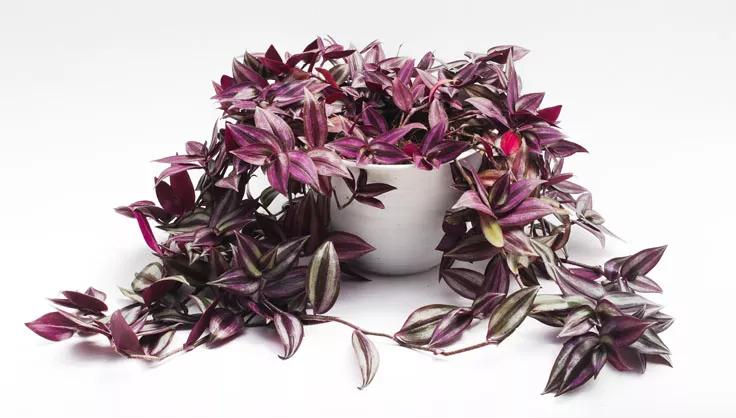How to Care for an Inch Plant

Scientific Information on Inch Plants
Inch plants belong to the genus Tradescantia, a group of around 75 species of perennial plants. They are part of the Commelinaceae family, commonly found in the Americas. These plants are known for their distinctive growth habit - they tend to spread or trail, making them ideal for hanging baskets or as ground cover.
Common Varieties & Colors of Inch Plants
Inch plants come in a variety of stunning colors and patterns. The 'Tradescantia zebrina' is famous for its striking purple, silver, and green stripes, while the 'Tradescantia fluminensis' boasts glossy green leaves. For those who prefer a more subtle look, the 'Tradescantia pallida' offers lovely purplish leaves. There's a variety to suit every taste!
How to Care for Inch Plants
Caring for inch plants is a breeze, and here's how you can ensure they thrive.
Light
Inch plants love bright, indirect light. A spot near a window where they can bask in the morning sun and then enjoy diffused light for the rest of the day is ideal.
Soil
These plants prefer well-draining soil. A mix of potting soil with some perlite or coarse sand is perfect for ensuring good drainage.
Fertilizer
A balanced, water-soluble fertilizer used once a month during the growing season (spring and summer) will keep your inch plants happy.
Watering
Water when the top inch of the soil feels dry. Be careful not to overwater, as this can lead to root rot.
Pruning
Yes, regular pruning promotes fuller growth. Pinching off the tips of the stems is a great way to encourage bushiness.
Repotting
Repot your inch plant every year or two, especially if it starts to outgrow its pot. Choose a pot that’s slightly larger and make sure it has good drainage.
Propagation
Propagation is simple! Just snip off a stem cutting, remove the lower leaves, and place it in water or directly into soil. Roots should develop in a few weeks.
Common Problems with Inch Plants
What are Common Pests and Diseases to Look Out For?
Keep an eye out for spider mites and aphids. Regularly inspecting your plants and maintaining proper care can prevent most pest problems.
Are Inch Plants Toxic to Pets and Other Animals?
Yes, inch plants are toxic to pets if ingested. Keep them out of reach of curious cats and dogs.
Inch Plants FAQs
Can inch plants survive in low light?
While they prefer bright, indirect light, inch plants can adapt to lower light conditions but may not be as vibrant.
How do I know if I'm overwatering my inch plant?
Signs of overwatering include yellowing leaves and a mushy stem base. Allow the soil to dry out a bit more between waterings.
Can inch plants be grown outdoors?
Yes, in warmer climates, inch plants can thrive outdoors. Just be sure to bring them inside if temperatures drop below 50°F (10°C).
In conclusion, inch plants are a versatile and attractive addition to any garden or home. With a little love and care, these plants can bring beauty and joy for years to come.
Print this Article:
Get the Dirt
Stay up to date on new articles and advice. Please fill out the information below.
